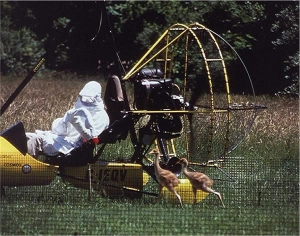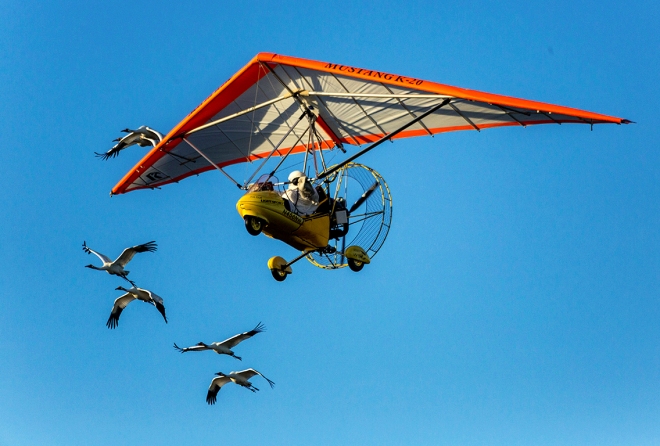Here are four good examples of why people seem to love the Endangered Species Act:
the Bald eagle – an enduring symbol of the U.S. of A.;
the Louisiana Black bear – which long ago provided the inspiration for the toy “teddy bear;”
the magnificent Humpback whale, which can still be found in all the oceans of the world;
and the West Indian manatees, and a subspecies, the Florida manatees, found along the coasts of the southeastern U. S. states, seeking particularly warm water sites in the winter months.
In spite of such conservation successes – which have occurred with the assistance of the Endangered Species Act – that law itself is now in danger. Many of the elected Republican leaders who control the U.S. Congress are eager “to modernize” the law, in ways that its supporters believe will weaken it significantly. Some in Congress propose outright repeal to curb what they see as its abuses. One of them, Representative Rob Bishop of Utah, said the E.S.A. has “been hijacked.”
Bishop, who is the chair of the House Natural Resources Committee, says in his opinion, the law “. . . has never been used for the rehabilitation of the species. It’s been used to control the land. We’ve missed the entire purpose of the Endangered Species Act.”
Is it possible he just doesn’t understand what the law does, or how it helps species survive? Its stated purpose is to “protect and recover imperiled species and the ecosystems on which they depend.” (Emphasis added.) There is no question that this takes work and dedication from both public servants and private citizens, alike. But the public’s willingness to support such work, by high margins, has been borne out in repeated polls and surveys over the years. (More about these polls, coming in a future post.)
Let’s look at some more facts about those “conservation successes” listed above. Here’s the briefest of histories of the ESA’s benefit to those four species : The Bald Eagle, the West Indian Manatee, and the Humpback Whale were all declared endangered under the predecessor of the current law: the eagle and manatee in 1967 and the whale in 1970. The Louisiana Black bear was declared endangered in 1992.
The Bald eagle was delisted in 2007 (considered “recovered” from near-extinction), the Louisiana Black bear and the majority of the Humpback Whale species, in 2016. The West Indian Manatee was proposed for down-listing from “endangered “to “threatened” in 2016; a final decision on this is expected any day.
Now, let’s look a little deeper into the facts surrounding the decline and recovery of one particular species – the Bald Eagle. According to this US Fish & Wildlife Service fact sheet, when America was a new nation there may have been as many as 100,000 nesting pairs of Bald eagles. In 1963 only 487 pairs could be confirmed.
When the Endangered Species Act was passed in 1973 the species was in danger of extinction throughout most of its range (which includes the entire North American continent). But worries about the species’ continued existence were already well-established by 1940 when the The Bald Eagle Protection Act was passed. Throughout the 1950s and 60s the plight of the eagle continued to worsen until Rachel Carson’s Silent Spring exposed the dangers of widespread use of the pesticide DDT, and further research revealed that this chemical interfered with eagles’ ability to produce strong eggshells and hatch their young.
In 1972, the two-year old Environmental Protection Agency took the historic and, at that time, controversial step of banning use of DDT in the U.S. With that, and the legal protections that banned shooting and established habitat management for the species, the bald eagles began their “remarkable rebound.” When the species was delisted in 2007, the number of nesting pairs had climbed to near 10,000.
In Wisconsin, where we now celebrate and support the endangered species within our state by purchasing a special series of “endangered resources license plates,” there were only 100 nesting pairs of eagles in the early 1970s. By contrast, over 1,000 nests have been counted every year since 2005; the count for 2016, was a record high of 1504. Federal funds, allotted to Wisconsin through the Endangered Species Act, combined with state funds have made it possible for the state to conduct 44 years of nest surveys. Wisconsin’s is one of the longest-running nest surveys in the country.
These involve April aerial surveys of the state to locate nests, return flights in May or June to check on nest success followed by, in some cases, some very hands-on work to band eaglets and do health assessments. Among other benefits, knowledge gained from the survey enables the DNR to give up-to-date information to landowners, companies, and communities that have an active nest on their property, so that the nest remains undisturbed throughout breeding season.
And that is a pretty good picture of The Endangered Species Act at work for eagles: looking for nests, monitoring the nests once discovered, educating land owners to the presence of an active nest on their property, and educating the general public about the whole process.

























